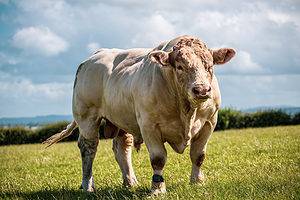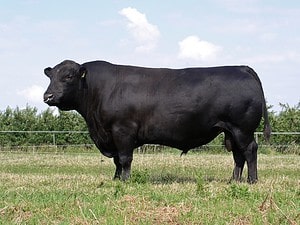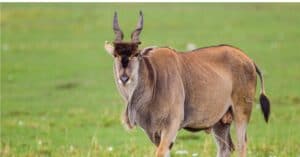Wild horses can be found on Assateague Island and wild hogs thrive across the United States, but is there such a thing as a wild cow? It depends on what definition you use.
The History of Cattle
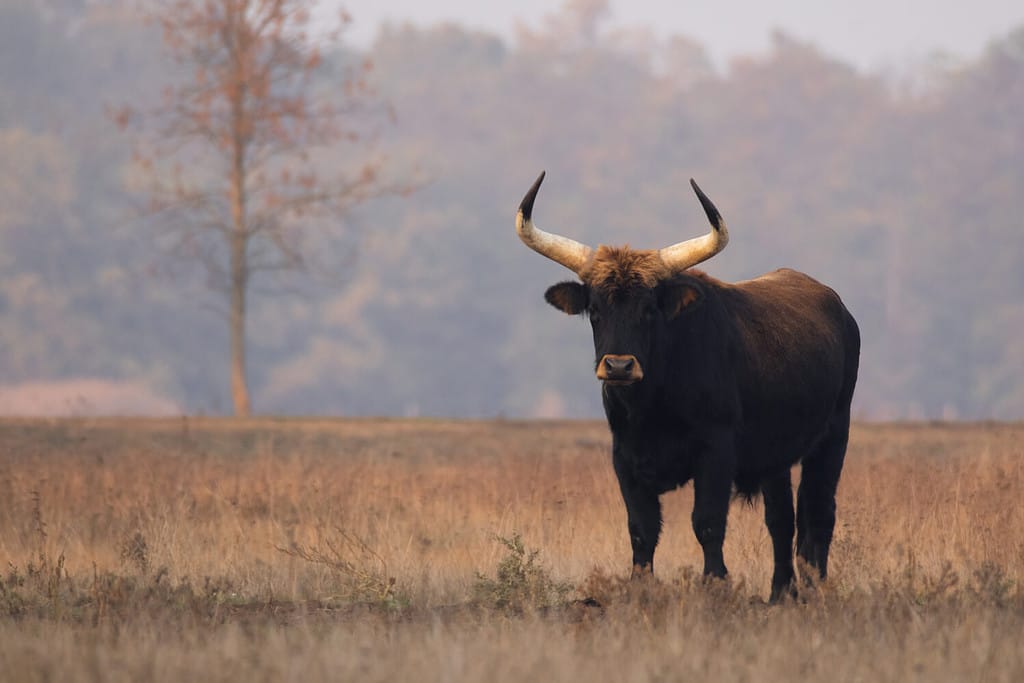
Heck cattle are being used in genetic projects attempting to bring back the wild aurochs.
©Simon Vasut/Shutterstock.com
Cattle as we know them today are descended from an extinct cattle species called aurochs (Bos primigenius) that were domesticated around 10,500 years ago in the Fertile Crescent. All modern cattle are believed to be descended from just 80 female aurochs. Even after cattle domestication, wild aurochs were found across North Africa, Mesopotamia, and throughout Eurasia. Their populations decreased over time due to habitat loss, hunting, and disease from domesticated cattle, and the last known wild aurochs died in 1627 in Poland.
Cattle have been selectively bred for certain traits ever since their domestication and can be found on every continent except Antarctica. They were first introduced to the Americas in 1493 during Christopher Columbus’ second expedition to the Caribbean. Globally, there are over 1,000 breeds of cattle.
Cattle vs. Cows
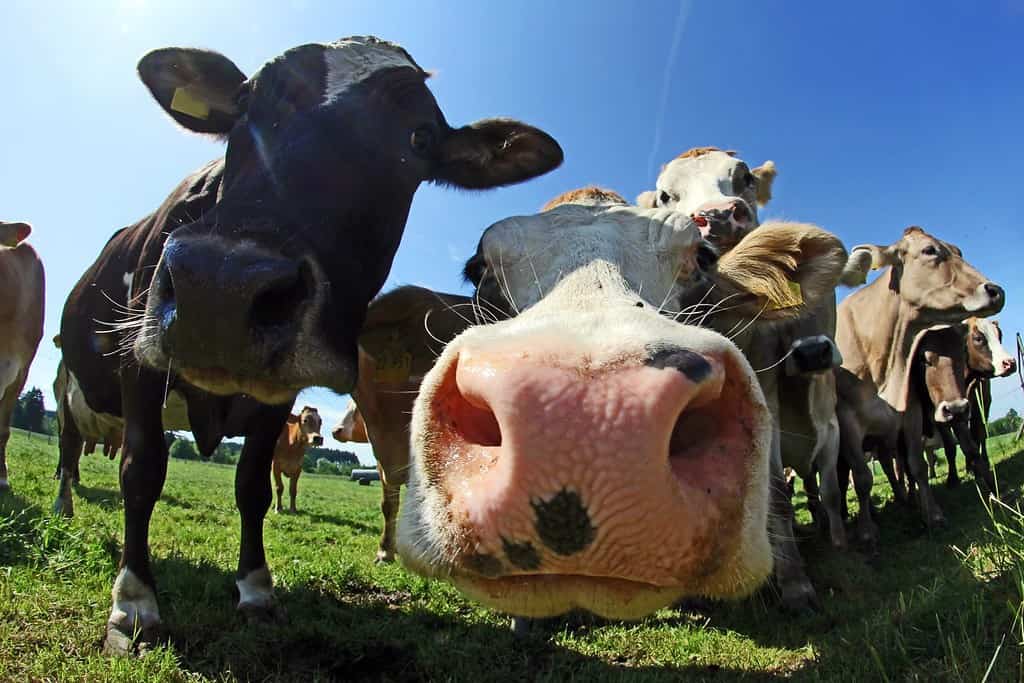
There are seven major breeds of dairy cows in the United States.
©Astrid Gast/Shutterstock.com
While the term “cow” is commonly used to describe cattle, this name is reserved for female cows that have begun lactation. Male cattle are called bulls or steer. Female cows that have not given birth and begun lactating are called heifers. Baby cattle are known as calves. So, while many people colloquially use “cow” to describe any bovine wandering in a field, it technically only applies to lactating females. Despite this misnomer, the term cow is now often used interchangeably to refer to cows of both sexes.
Are There Wild Cows?
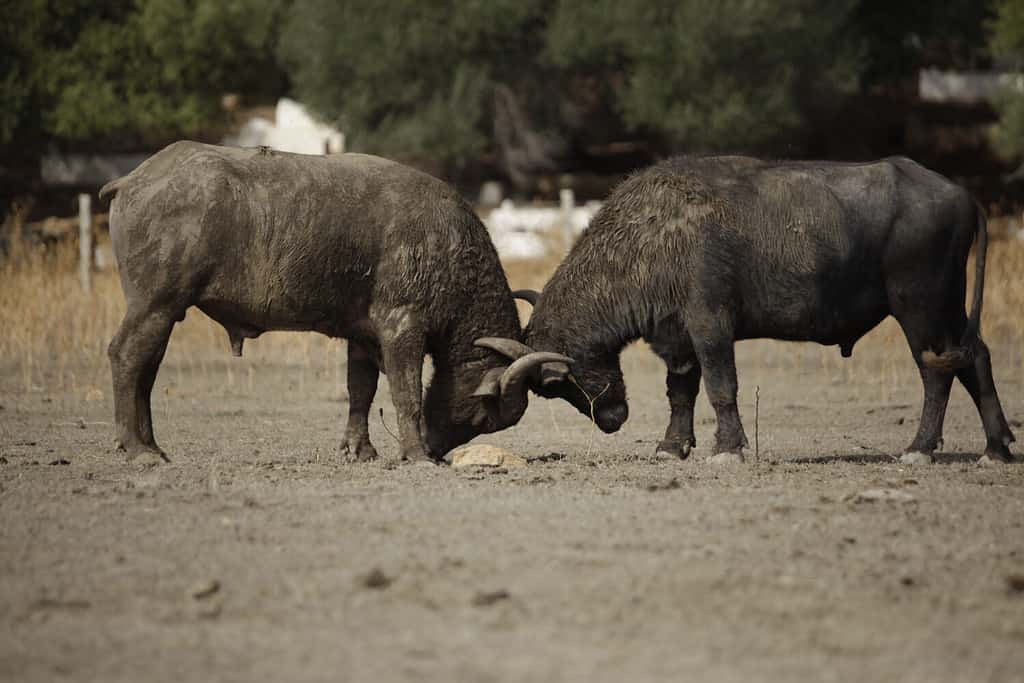
Wild
water buffalo
are also members of the Bovidae family.
©Agarianna76/Shutterstock.com
Domesticated cattle (Bos taurus) are members of the Bovidae family and have many living wild relatives. Relatives of the cow, such as water buffalo, yak, bison, and guar, can be found across several continents. However, there are no true wild Bos taurus.
One close relative of the domestic cow is the guar (Bos gaurus). Also known as Indian bison, they are native to South and Southeast Asia. They are the largest wild Bovidae species. A domesticated version of the guar called the gayal (Bos frontalis) is also found in the region across Myanmar, Bangladesh, northeast India, and parts of China.
Cows Running Wild
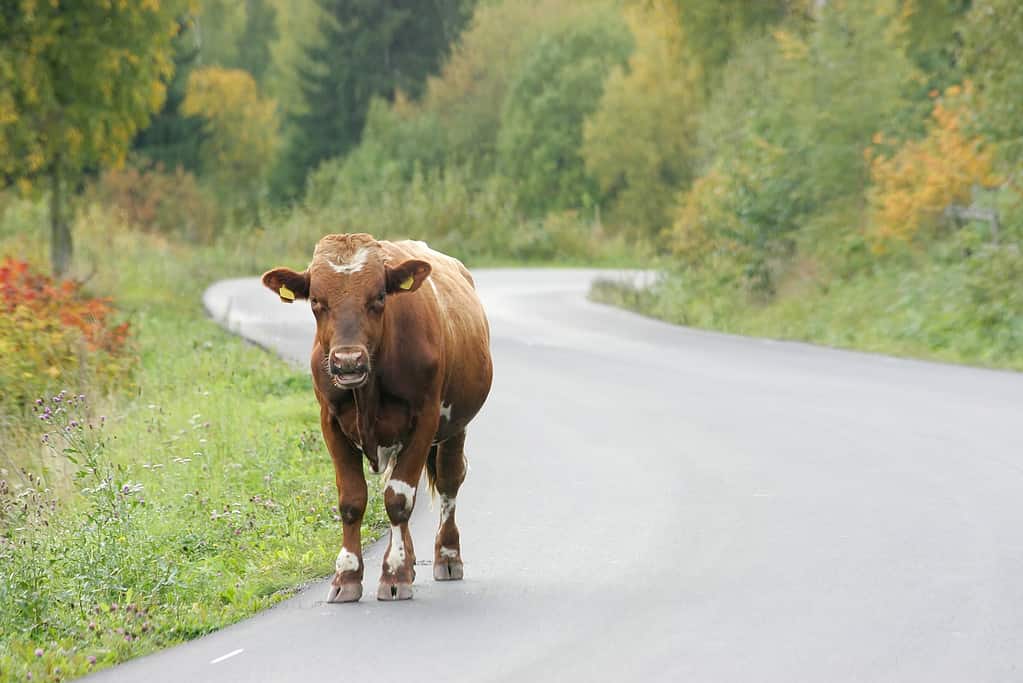
Although domesticated cows sometimes escape, they are not wild cows (just cows having a wild day).
©uniseller/iStock via Getty Images
While there may not be wild cattle populations, there are cattle running wild! Feral cow populations can be found in many countries including New Zealand, Samoa, Ecuador, Australia, and the United States.
The U.S. Forest Service defines “feral cows” as ones that don’t have signs of ownership such as ear tags or brands. Outside of Los Angeles, a herd of an estimated 150 feral cattle has carved new trails, decimated vegetation, and threatened hikers on the Pacific Crest Trail. Chirikof Island in the Kodiak Archipelago of Alaska is home to a herd of approximately 2,000 cows. They have sparked debate about whether they should be removed from the island (which is part of the Alaska Maritime National Wildlife Refuge). In New Mexico’s Gila National Forest, around 150 feral cows have been causing issues since a rancher abandoned cattle in the area in the 1970s.
Since cows are not native to these areas, discussions continue about whether they should be removed to preserve ecosystems. In 2023, the U.S. Forest Service killed 19 feral cows in Gila National Forest in an attempt to corral the population.
Making a Break for It
And of course, there are always the rogue cows that escape from domestic farms. In urban Cleveland in 2023, a cow dubbed “Punch” was found running loose downtown. (Her owner was never identified, and she was taken to a local sanctuary.) The same year, in Brooklyn, New York, residents were surprised to find a loose cow wandering the streets after escaping from a slaughterhouse transport vehicle. (Her wild escape earned her a pardon. She is now living out her days at the Skylands Animal Sanctuary in New Jersey.) A steer named Lester also made the news after escaping from his home at an animal rescue and making a dash down the highway — alongside a cowboy with a lasso in hot pursuit.
The photo featured at the top of this post is © Benjamin Frankum/iStock via Getty Images
Thank you for reading! Have some feedback for us? Contact the AZ Animals editorial team.



